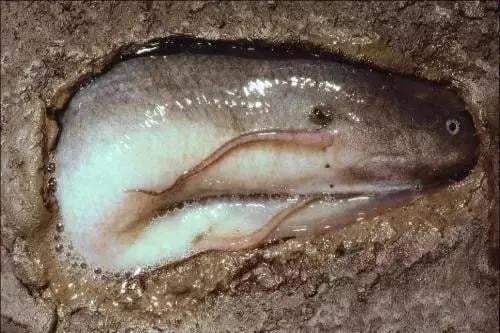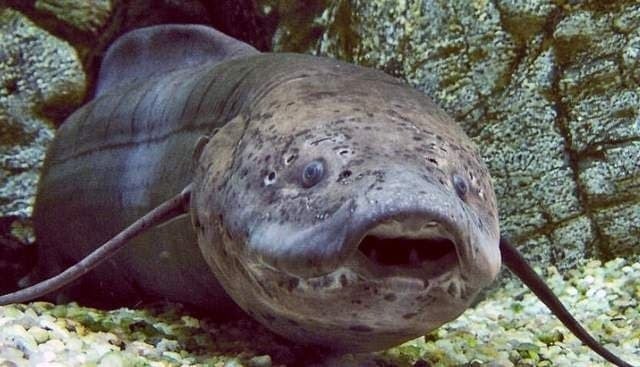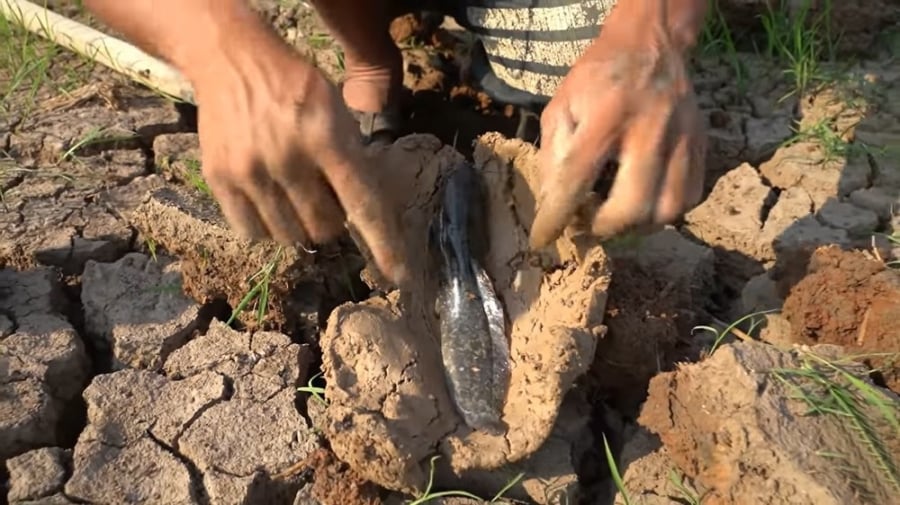On the rippling surface of the Bandama River in Côte d’Ivoire, a speckled creature gently emerges to breathe. Unlike most fish that surface to catch insects, this peculiar fish rises solely to breathe air. Meet the West African lungfish — one of the four extant species of lungfish in Africa, according to The Oxford Scientist.

A Fish Between Two Worlds
Growing up to a meter in length, the lungfish resembles an eel with its slender body adorned in a mottled pattern of brown and olive hues. It is a creature that straddles the boundary between water and land. Uniquely, in addition to gills, they possess two functional lungs that enable them to breathe air, a necessity due to their gills’ inability to provide sufficient oxygen.
As the dry season sets in and the river begins to dry up, while other fish might migrate or seek refuge in small puddles, the lungfish chooses to remain and adapt.
The Enigmatic Survival Strategy: Estivation in the Mud
As the water recedes, the lungfish uses its robust body to burrow deep into the muddy riverbed, creating a refuge. Here, they secrete a thick layer of mucus that envelops their entire body, leaving only a small opening near the mouth for breathing.
This mucus, once hardened, forms an effective waterproof cocoon, enabling the lungfish to survive for months, even up to four years, without food or water. This state of suspended animation is known as estivation – a physiological dormancy that allows them to endure extreme environmental conditions.
Precursors to Estivation
The onset of estivation is triggered by environmental cues:
- Falling water levels
- Increased salt concentrations (such as calcium and magnesium) in the water
- Perception of dehydration, hypoxia, and physiological stress

Extraordinary Changes Within
During estivation, the lungfish undergoes profound physiological alterations:
- Reduced metabolism: Oxygen consumption is halved, and heart rate plummets from 25 beats per minute to a mere 2 beats per minute.
- Cessation of ammonia production: This reduces the burden of waste excretion.
- Shrinkage of internal organs: The intestines, kidneys, and heart decrease in size and function to conserve energy.
Genetic and hormonal analyses reveal significant changes in brain activity, guiding the transition into this dormant state.
Mucus Cocoon: A Bactericidal Shield
Intriguingly, the mucus cocoon is fortified with an abundance of granulocytes – crucial immune cells. These cells:
- Migrate from internal organs to the skin
- Form extracellular immune traps
- Prevent bacterial invasion during estivation

Awakening from the Long Slumber
With the arrival of the rainy season, water seeps into the lungfish’s mouth – the only exposed part. This triggers their awakening. The lungfish then:
- Struggles to break free from the cocoon
- Emerges in a state of exhaustion
- Excretes the accumulated waste of many months
- Requires approximately ten days for its internal organs to recover and resume normal function
- Resumes its aquatic life, foraging and hunting as usual
A “Living Fossil” in the Modern World
Lungfish are often referred to as “living fossils.” Fossil records of burrowing lungfish date back to the Devonian period, approximately 390 million years ago, highlighting their remarkable resilience and longevity throughout evolution.
However, today, lungfish face various threats due to human activities, including overfishing and the destruction of their swampy habitats for agricultural purposes. For instance, in just five years, the population of marbled lungfish in the Victoria Basin has declined by 11% — a stark warning for the conservation of this extraordinary species.































